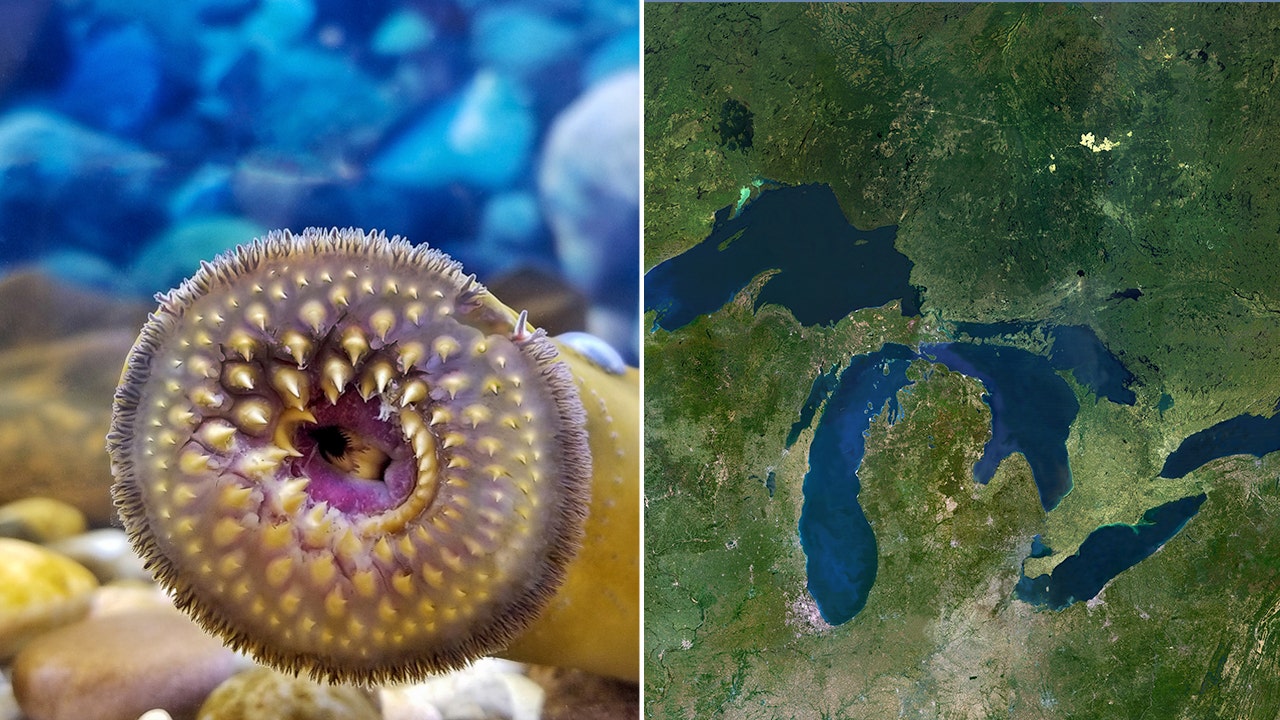A fascinating creature, known as a vampiric, ray-finned fish, has been causing quite a stir among fishermen and tourists in the Great Lakes. However, an organization dedicated to preserving aquatic wildlife has assured everyone that they have successfully managed to bring the population under control, despite recent sightings.
These fish, called sea lampreys, resemble eels and are parasitic in nature. While they are native to the Northern Hemisphere, they are considered invasive in the Great Lakes region. During the COVID-19 pandemic, there was a brief surge in the sea lamprey population. In response, the Great Lakes Fishery Commission, which consists of wildlife experts from the United States and Canada, worked to remove the surplus of lampreys.
According to Marc Gaden, the deputy executive secretary of the Great Lakes Fishery Commission, sea lamprey control efforts are ongoing. The commission uses a pesticide called lampricide, which specifically targets lampreys when applied at the right concentrations. However, due to logistical challenges caused by the pandemic, the application of lampricide was reduced between 2020 and 2021. Gaden explained that it takes about two years to determine the success of a given field season, as the survivors of one year’s control efforts return to spawn in the subsequent year. Therefore, they expect to see a spike in lamprey numbers in 2023 due to the curtailed control efforts in 2021.
Despite the commission’s efforts, there have still been sightings of sea lampreys in the Great Lakes. Fishermen have observed these parasitic fish attached to other fish or evidence of lamprey bites. These sightings have occurred in Lake Superior, Lake Michigan, and other parts of the Great Lakes. The presence of sea lampreys has caused some inconvenience for anglers, who have had to position their wounded catches carefully for photographs. However, it is important to note that sea lampreys do not pose a known health risk to humans, and fish attacked by lampreys can still be consumed if desired.
Although sea lampreys are not commonly consumed in North America today, they have been consumed in various parts of the world throughout history. They have been eaten in European countries like England, Portugal, Spain, France, Sweden, Finland, and Baltic countries, as well as in South Korea. Sea lampreys have a unique appearance, resembling eels with a slim build. They have two closely spaced dorsal fins, seven gill openings on each side, a large round mouth with sharp teeth, and a rasping tongue.
Sea lampreys are ancient creatures that have retained primitive characteristics from millions of years ago. They feed on other fish and can kill a significant amount of fish during their adult lifespan. They are native to the northern and western Atlantic Ocean but made their way to the Great Lakes in the 1920s through shipping canals.
The Great Lakes Fishery Commission has been working tirelessly to control the sea lamprey population since 1958. Their efforts have been successful in reducing lamprey populations by about 90-95% throughout the Great Lakes basin. This control program has allowed for the emergence of a thriving Great Lakes fishery, which is worth more than $6 billion annually. The commission sets target control numbers for each lake based on the number of adult sea lampreys they aim to achieve.
While sea lampreys are here to stay in the Great Lakes, the Great Lakes Fishery Commission believes that they can be effectively managed and controlled. These resilient creatures can cause significant damage to the ecosystem if left unchecked, but with continued efforts, their impact can be mitigated.
In conclusion, the presence of sea lampreys in the Great Lakes may be startling, but the ongoing efforts of the Great Lakes Fishery Commission have been successful in managing their population. Anglers and tourists may still encounter these unique creatures, but they pose no direct threat to humans. With continued control efforts, the Great Lakes can maintain a thriving fishery while minimizing the destructive impact of sea lampreys.
Denial of responsibility! VigourTimes is an automatic aggregator of Global media. In each content, the hyperlink to the primary source is specified. All trademarks belong to their rightful owners, and all materials to their authors. For any complaint, please reach us at – [email protected]. We will take necessary action within 24 hours.


